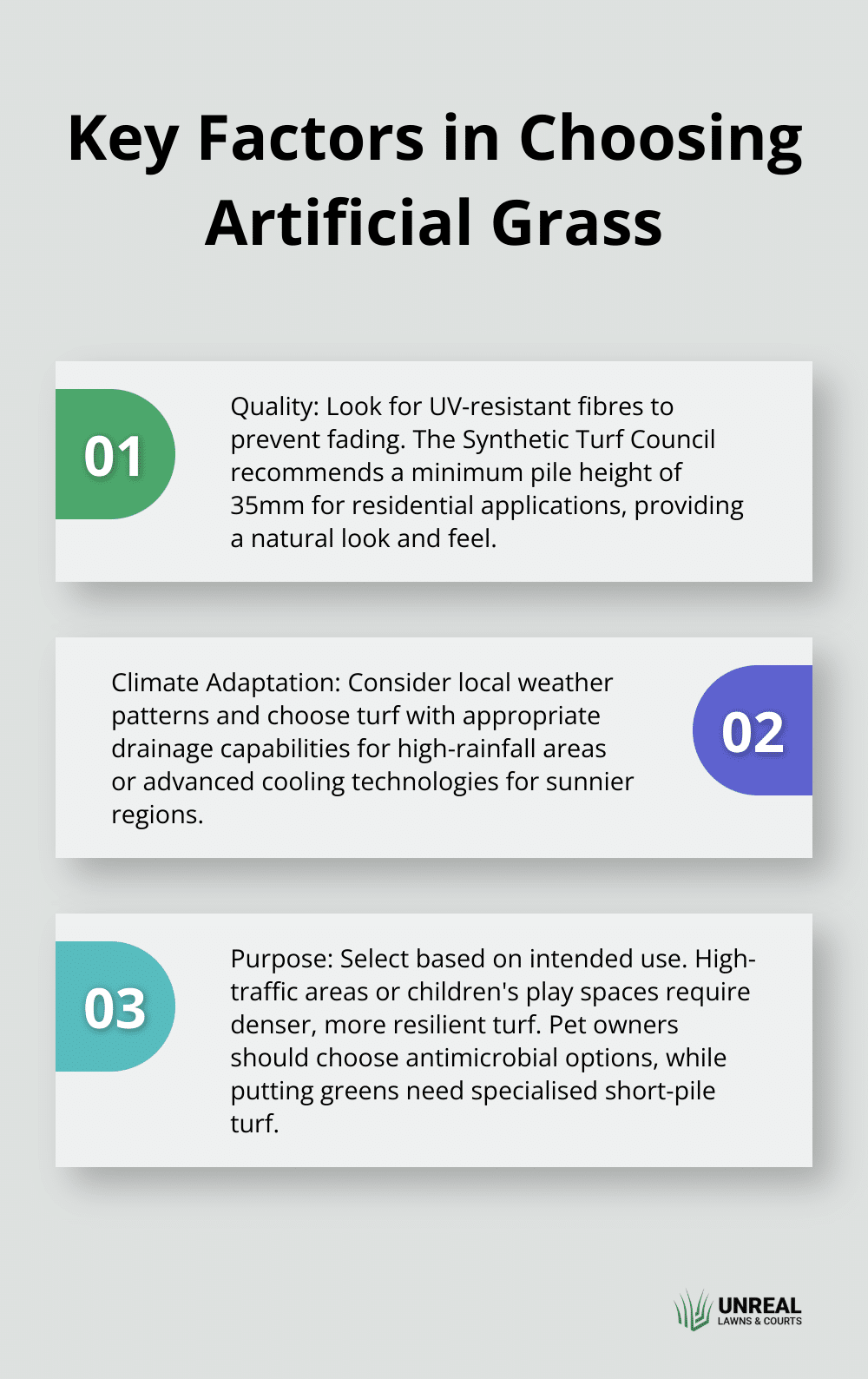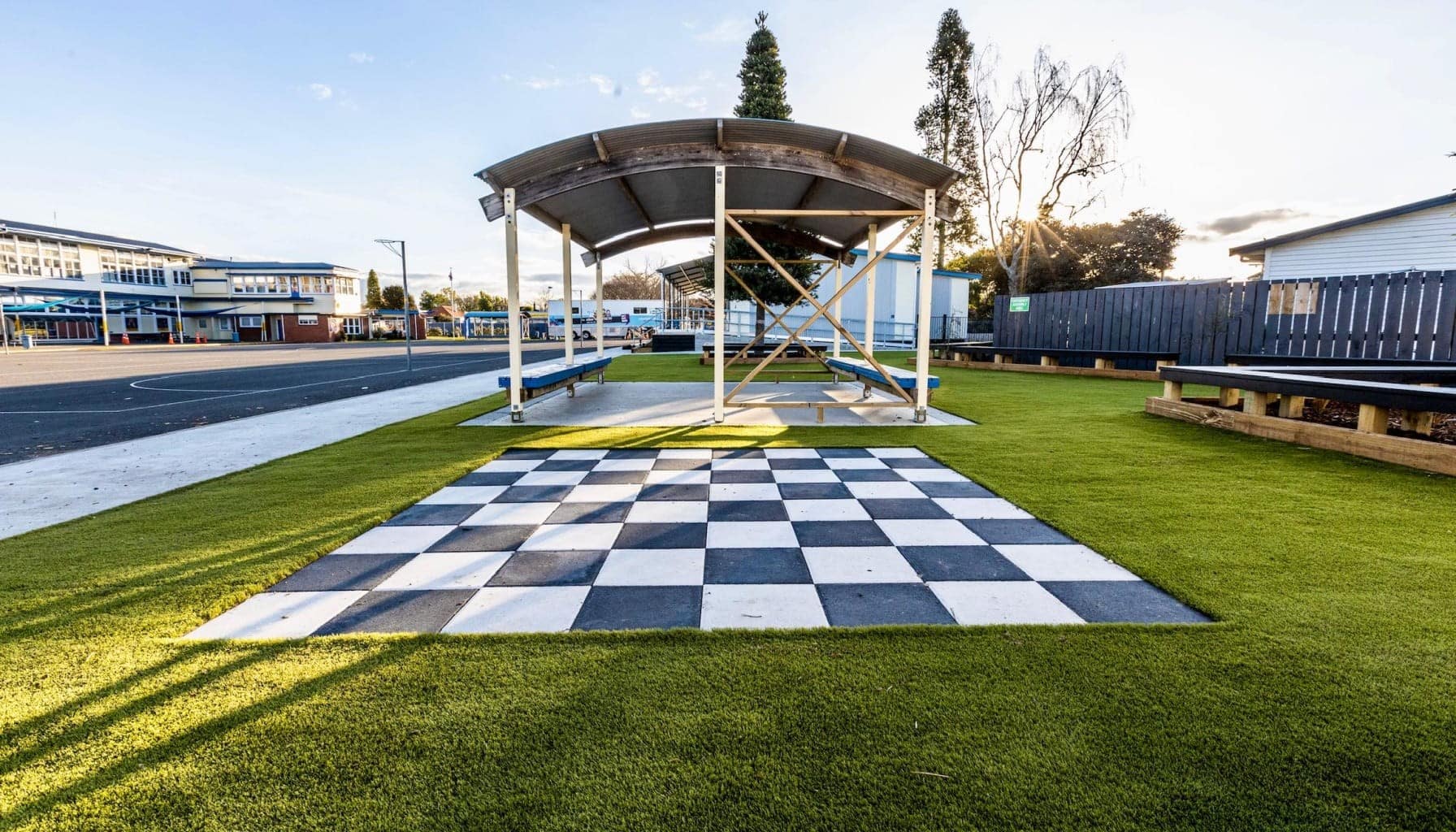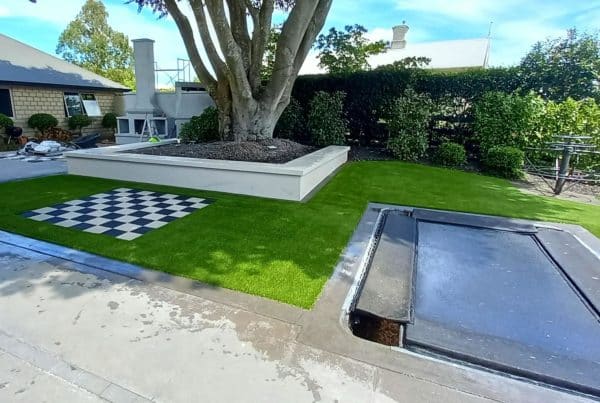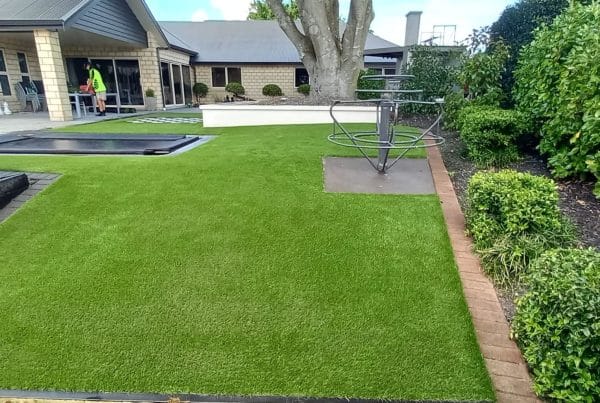At Unreal Lawns & Courts, we’ve seen a surge in homeowners considering fake grass for their properties. This low-maintenance alternative to natural lawns has gained popularity for its year-round green appearance and water-saving benefits.
However, like any landscaping choice, artificial turf comes with its own set of advantages and drawbacks. In this post, we’ll explore the pros and cons of fake grass to help you make an informed decision for your home.
Why Artificial Grass Wins for Homeowners
Effortless Lawn Maintenance
Artificial grass revolutionises home landscaping by eliminating time-consuming lawn chores. Homeowners can bid farewell to mowing, weeding, and fertilising, reclaiming their weekends for more enjoyable activities. Synthetic lawns can save thousands of letters of water each year, making them an excellent choice for drought-prone areas. This water conservation proves particularly valuable in areas prone to drought or subject to water restrictions.
Year-Round Green Perfection
New Zealand’s unpredictable weather no longer dictates the appearance of your lawn. Artificial grass maintains its vibrant, lush look throughout all seasons. You won’t encounter brown patches during summer droughts or muddy spots after winter rains. High-quality artificial grass can last between 15 to 25 years with proper care, making it a long-term investment in your property’s aesthetics.
Durability for Active Lifestyles
Modern artificial grass excels in durability, standing up to heavy foot traffic, energetic pets, and even sports activities without showing signs of wear. This resilience makes it an ideal choice for families with children or pets. Additionally, allergy sufferers benefit from synthetic turf as it doesn’t produce pollen or harbour common lawn allergens, creating a more comfortable outdoor environment.
Versatile Landscaping Solutions
Artificial grass offers unparalleled flexibility in landscape design. Fake grass thrives in areas where natural grass struggles (such as shaded spots or rooftop gardens), allowing for creative and unique outdoor spaces. You can seamlessly incorporate it with other landscaping elements or even bring a touch of green indoors. The National Association of Home Builders suggests that well-executed landscaping featuring artificial grass can boost property values by up to 10%.
Cost-Effective Long-Term Investment
While the initial installation of artificial grass may require a higher upfront cost, it proves cost-effective in the long run. The elimination of ongoing expenses (e.g., water bills, lawn care equipment, fertilisers) and the reduction in maintenance time contribute to significant savings over the lifespan of fake grass. As technology advances, artificial grass continues to improve in quality and realism, offering an increasingly attractive option for homeowners seeking a beautiful, low-maintenance lawn solution.
The benefits of artificial grass extend beyond mere convenience, offering a practical and sustainable approach to modern landscaping. As we explore the potential drawbacks in the next section, you’ll gain a comprehensive understanding of how synthetic turf might fit into your home environment.
What Are the Drawbacks of Artificial Grass?
Artificial grass offers numerous benefits, but it also comes with potential drawbacks. This balanced perspective will help homeowners make informed choices about their landscaping options.
High Initial Costs
The upfront investment for artificial grass can be substantial. Professional installation costs can range from NZD $70 to $150 per square metre, including labour, site preparation, and materials. Homeowners should weigh this cost against long-term savings on maintenance and water bills.
Heat Retention Issues
Artificial grass can become uncomfortably hot in direct sunlight. On scorching summer days, synthetic turf surfaces can reach temperatures up to 60°C (140°F), significantly hotter than natural grass. This heat retention makes barefoot walking uncomfortable and potentially harmful for pets. Unreal Lawns Cool range offers cool yard reflective pigments to address this issue, but it remains a concern for homeowners with out Unreal Lawns Cool range .
Environmental Considerations
While artificial grass reduces water usage, it raises other environmental concerns. At the end of its lifespan, synthetic turf can contribute to landfill waste if not recycled properly. Additionally, artificial lawns don’t provide the same ecosystem benefits as natural grass (such as carbon sequestration or habitat for insects and microorganisms).
Lack of Natural Characteristics
Some homeowners miss the natural feel and scent of real grass. Artificial turf doesn’t provide the same sensory experience as natural lawns – the smell after rain or the soft, cool feel of grass blades. This factor is subjective but important for those who value these natural elements in their outdoor spaces.
Drainage Challenges
Proper drainage proves essential for artificial grass installations. Without adequate preparation, synthetic lawns can face issues with poor sub-base installation, inadequate grading, and slope. This can lead to problems like mould growth or unpleasant odours, especially in areas with high rainfall or poor natural drainage. Professional installation with a proper base and drainage system prevents these issues.
Maintenance Requirements
Synthetic grass is prone to accumulating debris such as leaves, dirt, and other organic matter. Regular cleaning and maintenance are necessary to keep the artificial lawn looking its best and functioning properly.
Potential Health Risks
Some discounted synthetic turf products may potentially contain hazardous chemicals, posing potential risks to the health and well-being of users. It’s crucial to choose high-quality artificial grass from reputable manufacturers to minimise these risks.
Advancements in artificial grass technology continue to address many of these concerns. As you evaluate your options, consider your specific needs, local climate, and intended use for your outdoor space. The next section will explore key factors to consider when selecting artificial grass for your home.
How to Choose the Right Artificial Grass
Quality Considerations
The quality of synthetic grass varies widely. Products with UV-resistant fibres prevent fading, while heat-resistant technologies keep your lawn cooler. The Synthetic Turf Council suggests a minimum pile height of 35mm for residential applications, which provides a natural look and feel. High-quality artificial grass often includes warranties ranging from 7 to 15 years, offering peace of mind for your investment.

Climate Adaptation
New Zealand’s diverse climate requires careful selection of artificial grass. Areas with high rainfall, such as Auckland or Wellington, need products with excellent drainage capabilities. Sunnier regions like Hawke’s Bay or Nelson benefit from fake grass with advanced cooling technologies. Some manufacturers offer regional-specific products designed to withstand local weather patterns effectively.
Purpose-Driven Selection
The intended use of your artificial lawn influences your choice significantly. High-traffic areas or children’s play spaces require denser, more resilient turf. Pet owners should select antimicrobial options that resist odours and allow easy waste removal. For putting greens, specialised short-pile turf provides the perfect surface for practise.
Installation Expertise
Professional installation ensures the longevity and performance of your artificial grass. The base preparation plays a key role – a properly levelled and compacted sub-base prevents future issues (like drainage problems or uneven surfaces). While DIY installation might save money initially, improper installation often leads to costly repairs. Many artificial grass suppliers offer installation services to ensure correct turf placement from the start.
Regulatory Compliance
Check your local council regulations before purchasing artificial grass. Some areas restrict the percentage of property covered with synthetic turf or require specific drainage solutions. Homeowners’ Associations may have additional rules regarding the appearance of front lawns. Understanding these regulations prevents potential conflicts or the need for expensive modifications later.
Final Thoughts
Artificial grass offers homeowners a low-maintenance, water-efficient lawn solution with year-round greenery and reduced water bills. The benefits of fake grass extend to busy families, pet owners, and those in drought-prone areas. However, potential drawbacks such as initial costs, heat retention, and environmental impact require careful consideration before installation.
Your local climate, intended use of the space, and personal preferences will determine if fake grass suits your home. Technological advancements continue to improve heat-resistant materials, eco-friendly production methods, and realistic textures (addressing many current drawbacks). The future of artificial grass looks promising, with ongoing research focused on enhancing its environmental profile and performance.
Unreal Lawns & Courts provides premium artificial grass solutions tailored to New Zealand’s unique climate our cool yard reflective pigments keeps your lawn cool for busy lifestyle needs. Our expert team can guide you through the selection process to find the perfect synthetic turf for your property. We offer top-quality products and professional installation services to bring your vision to life.





